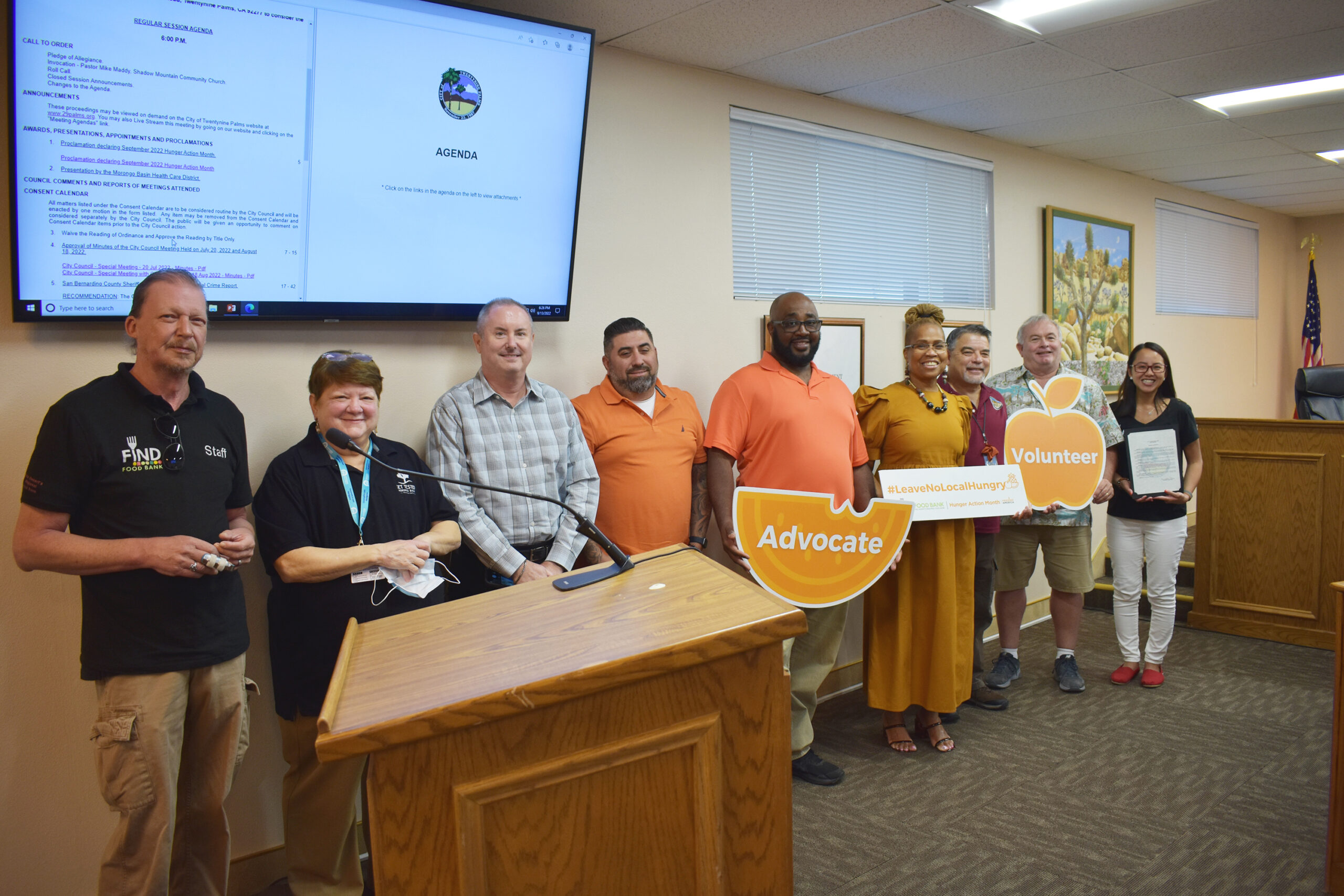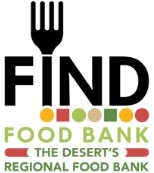Hunger and Health Go Hand in Hand

You may have noticed the El Mirador Tower lighting up orange at the Desert Regional Medical Center. The Comprehensive Cancer Center and the Hi-Desert Regional Medical Center also shined orange this September to call out hunger. The Desert Care Network joined #HungerActionMonth to raise awareness of the connection between food insecurity and poor health outcomes.
It is known as food insecurity when you don’t have reliable access to healthy, culturally appropriate foods. 1 in 10 Americans experience food insecurity, and an estimated 130 million adults are living with diabetes or prediabetes in the US. According to the U.S. Government Accountability Office, inadequate nutrition is linked to the leading causes of death in the United States.
On September 28, 2022, the White House Press Conference on Hunger, Health, and Nutrition convened to discuss their plan to address diet-related diseases and food insecurity in the US. Nutrition and anti-hunger advocates nationwide, namely the Feeding America network of food banks including FIND, contributed their expertise on the topic.
Solutions proposed at the White House Press Conference on Hunger include prioritizing nutrition education, new healthcare practices that consider the impact of hunger on health, and increasing access to healthy foods through a Universal Free School Meals program for children and more robust federal nutrition assistance programs.
Mayor Linda Evans of the City of La Quinta, and Chief Strategy Officer – Community Advocacy at Tenet Health, speaks on her support for FIND during Hunger Action Month. On behalf of La Quinta and the Desert Care Network, she encourages you to donate and volunteer to mitigate hunger and improve community health desert-wide.
5% increase in diabetes rates
For Hispanic and Latino children
86% of public school students
Qualify for free and reduced-price lunch in the Coachella Valley
6 million children
Lived in food insecure households in 2021
The Lasting Effects of Child Hunger
Children in food-insecure households face higher risks of long-term developmental, behavioral, and socio-emotional problems, including:
- Mental health problems (e.g., depression, anxiety, suicidal ideation)
- Poor educational performance and academic outcomes
- Increased hospitalizations and hospital charges
When you already can’t afford to put food on the table, you’re less likely to seek medical assistance when ill or injured. This increases the long-term and immediate impact of the illness. Often worst symptoms lead to higher healthcare costs, especially for those who do not have medical insurance, contributing to the cycle of hunger and poverty.
Universal School Meals was introduced as one solution to child hunger during the White House Press Conference. Guaranteeing breakfast and lunch for every child enrolled in the public school system could eliminate the barriers to signing up for free lunches and diminish the stigma for the students utilizing the program. California is the first state to implement the Universal Meals Program, which began the 22-23 School Year.
Partnering to End Hunger
Integrate Nutrition and Health

FIND’s Hi-Desert warehouse and distribution center is in the Morongo Basin Healthcare District. Our partnership provides access to healthy food for residents in geographically rural areas who have fewer healthy food options compared to metropolitan areas.
The Morongo Basin Healthcare District currently offers direct food assistance to patients who are screened as food insecure. They address the urgent medical needs of their patients and offer fresh produce and nutrient-rich foods from FIND to help build immunity and aid the recovery of patients who they identify as food-insecure.
During the White House Press Conference, President Biden highlighted the need for doctors, nurses, and healthcare practitioners to be trained in recognizing the signs of food insecurity. Hunger is a symptom of many socio-economic, geographical, and historical problems, and it can cause a snowball effect of poor health decisions and a lifetime of chronic health diseases.
Nutrition Education
Empower All Consumers to Make and Have Access to Healthy Choices

To address the root causes of food insecurity, with the ultimate goal of ending hunger for a lifetime, we advocate on the national, state, and local levels for policies that mitigate child hunger and increase healthy food access and education. Understanding that early diet patterns shape lifelong food preferences, FIND partnered with healthcare and research institutions to create a community-based cookbook. Ancestral Recipes: From My Grandma’s Kitchen to Yours or Recetas Ancestrales provides nutrition education through traditional Latino recipes to prevent or treat diet-related chronic health conditions.

“In my experience, the Hispanic community wants to eat healthy, but doesn’t have access to nutrition education.
People talk about how they leave a legacy, how they leave something behind for the community. If you can cook something your grandmother made, it becomes that much more special. They shared it, and it’s part of the legacy that lives on.”
Lorena Marroquin
Director of Community Impact, FIND Food Bank
The Patient-Centered Outcomes Research Institute (PCORI) grant funded a partnership between the patient communities in the eastern Coachella Valley, the University of California Riverside, FIND Food Bank, and the University of California Los Angeles. Utilizing the food items FIND distributes to the community and USDA’s MyPlate, the recipes are tailored to ensure ingredients are available and affordable to the patient community in the eastern Coachella Valley. Community members contributed their own family recipes and chose the theme “Ancestral Recipes: From My Grandma’s Kitchen to Yours.”
Improving Food Access and Affordability
White House Press Conference on Hunger, Health, and Nutrition
CalFresh, federally known as the Supplemental Nutrition Assistance Program (SNAP), provides a monthly stipend for low-income households and individuals to purchase healthy foods and fresh produce. It is the most effective federal nutrition program for addressing hunger and stimulating the economy. With the introduction of new programs during the pandemic, like the Summer Electronic Benefits Transfer (EBT) and Pandemic (EBT), food insecurity declined in U.S. households from 1 in 8 in 2020 to 1 in 10 in 2021.
President Biden proposed several routes to increase agency and access for food purchasing including making it easier for eligible individuals to access federal food, human services, and health assistance programs such as SNAP, WIC, and Medicaid.
Sources
September 2022 – whitehouse.gov. (n.d.). Retrieved September 29, 2022, from https://www.whitehouse.gov/wp-content/uploads/2022/09/White-House-National-Strategy-on-Hunger-Nutrition-and-Health-FINAL.pdf
Hartline-Grafton, H., & Hassink, S. G. (2021, March). Food insecurity and health: Practices and policies to address food insecurity among children. Academic pediatrics. Retrieved September 29, 2022, from https://www.ncbi.nlm.nih.gov/pmc/articles/PMC7347342/
National Diabetes Statistics Report Center. (2022, January 26). National DPP Customer Service Center. Centers for Disease Control and Prevention. Retrieved September 27, 2022, from https://nationaldppcsc.cdc.gov/s/article/CDC-2022-National-Diabetes-Statistics-Report




